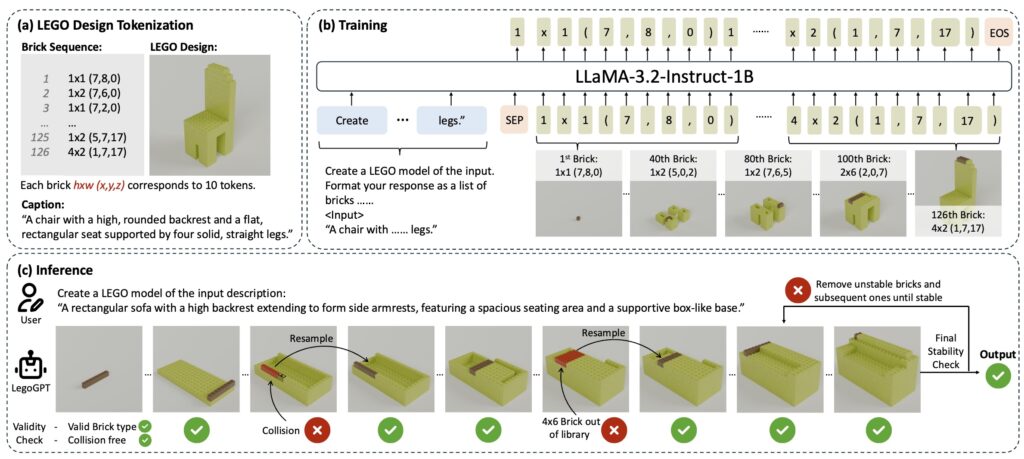**Summary:**
In the dynamic world of AI, the LegoGPT system showcases revolutionary advancements in 3D model creation using artificial intelligence. Researchers have developed a system capable of generating detailed Lego designs based on textual prompts, proving its effectiveness through robotic and human assembly tests. Enhanced with robust texture and color options, LegoGPT sets a new standard in the tech landscape by combining creativity with structural integrity in model generation.
Discover the Innovative LegoGPT AI System

Credit:
Pun et al.
Researchers have heightened the capabilities of the LegoGPT system by incorporating various texture and color options. For instance, users can generate complex models like an “Electric guitar in metallic purple,” wherein the Lego bricks are automatically assigned shades of purple tailored to the design prompt.
Robotic Assembly and Human Testing
To validate their innovative designs, the research team utilized robots to assemble the AI-generated Lego models. A specialized dual-robot arm system, equipped with force sensors, was employed to accurately pick and place the bricks according to the detailed instructions provided by LegoGPT.
Furthermore, human testers built several designs manually, confirming the AI’s capability to produce truly buildable models. “Our experiments indicate that LegoGPT delivers stable, diverse, and aesthetically appealing Lego constructs that closely correspond to user input,” the research team emphasized in their publication.
Comparison with Other AI Systems
When benchmarked against alternative AI models for 3D creation, LegoGPT distinguished itself with a focus on structural integrity. Testing against systems such as LLaMA-Mesh revealed LegoGPT’s superior performance in generating the highest percentage of stable structures.
A video of two robot arms building a LegoGPT creation, provided by the researchers.
Future Prospects and Limitations
Despite its achievements, the current iteration of LegoGPT is confined to a 20×20×20 building space and operates with only eight standard brick types. “At present, our method relies on a set of commonly utilized Lego bricks,” the team admitted. They plan to expand both the brick library and the training dataset, aiming to include a wider array of objects beyond the currently available 21 categories.
For those eager to experiment further, the researchers have made their dataset, code, and models accessible on both their project website and GitHub page.
FAQ
What is LegoGPT?
LegoGPT is an AI system capable of generating intricate Lego designs based on textual prompts, allowing for both robotic and manual assembly of models.
How does LegoGPT ensure structural stability?
The system is designed with a strong focus on structural integrity, extensively tested against other AI models to demonstrate superior performance in generating stable structures.
Where can I access LegoGPT’s resources?
The dataset, code, and models for LegoGPT are available on the project’s official website and GitHub repository for public use and experimentation.


